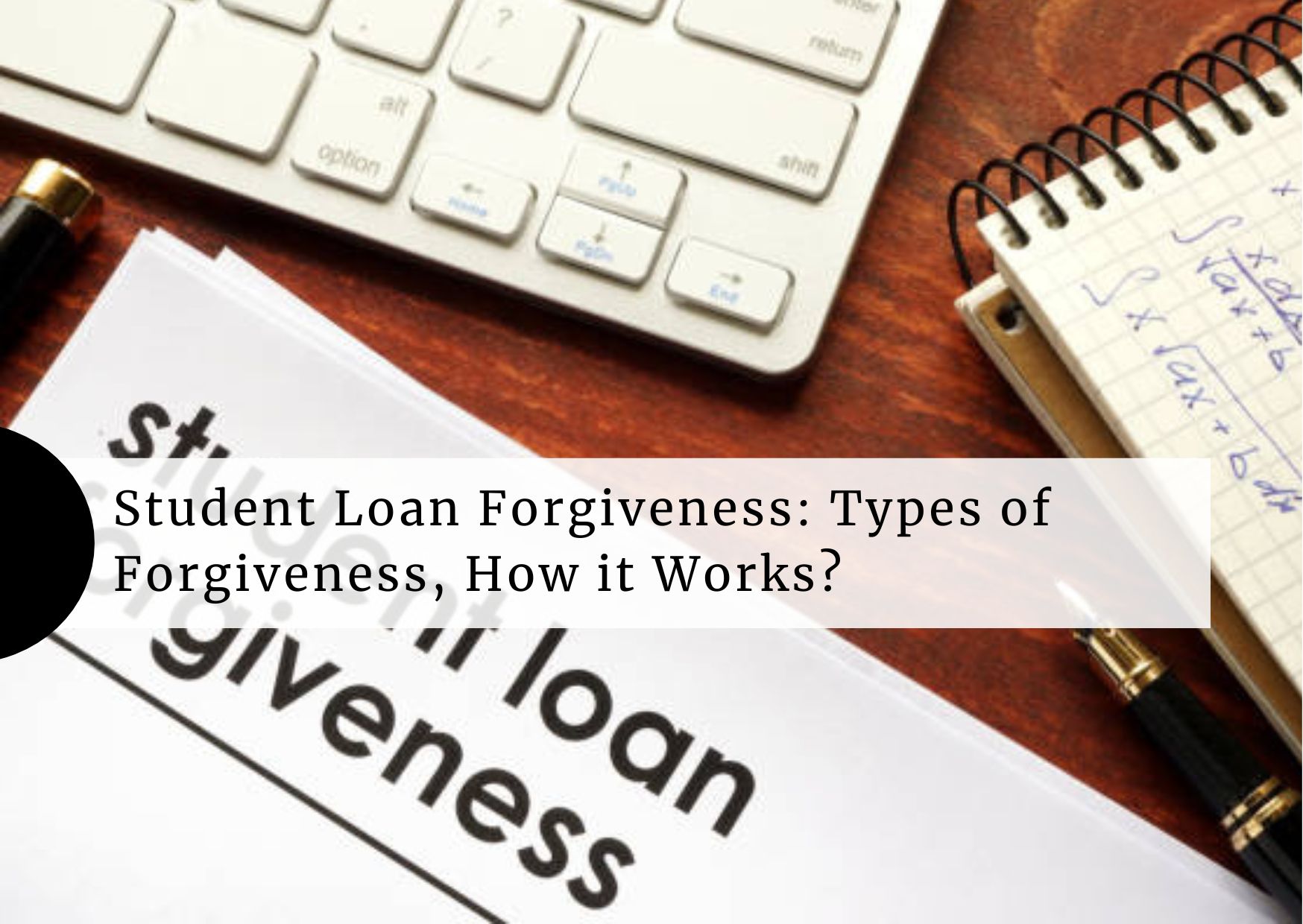Student Loan forgiveness remains a hot topic in the education world. Student loan relief can transform the lives of many students and graduates. Suppose, you’ve just completed your degree, filled with enthusiasm and hope for the future. But then, reality strikes when you face the massive weight of student loan debt hanging over your head.
Many students go through this situation which can destroy their peace of mind and lead to a Student Loan Regret. To avoid this regret freshly graduated students try to repay their student loans faster. The government is helping students to get out of student debt earlier through various programs. One of them is Student Loan Forgiveness.
Let’s discuss everything you need to know about Student Loan Forgiveness.
What is student Loan Forgiveness?
Student loan forgiveness is a government-backed program to help students and graduates manage their student loan debt. The concept is simple yet powerful: it offers eligible individuals the chance to have a portion, or sometimes even all, of their student loans forgiven or canceled.
How Does it Work?
Now you have a basic idea of what student loan forgiveness is. Let’s take a look at how this program works.
When students pursue higher education, they often need financial assistance to cover the costs of tuition, books, and living expenses. They can take out student loans from either the federal government or private lenders to fund their education.
Once they graduate or leave school, the repayment period begins. During this time, borrowers need to start making monthly payments to repay the loans. However, many graduates find themselves facing hefty loan balances, which can be a significant financial burden as they start their careers and build their lives.
Student loan forgiveness steps in as a potential solution for those struggling to manage their loan debt. This program benefits many students to tackle their financial burden.
Types of Student Loan Forgiveness
There are different types of forgiveness programs, each with its own set of requirements and eligibility criteria. Let’s break it down:
PSLF (Public Service Loan Forgiveness)
This one is for those who dedicate their careers to serving the public. If you work full-time for the government or a non-profit organization you might be eligible for this program. PSLF Program forgives the remaining balance from your direct loan.
Eligibility Criteria
- Government Employees and Non-Profit Organization employees
- Make a total of consecutive 120 monthly payments.
- Having a Direct Loan (Federal Student Loan issued by the U.S. Department of Education)
How to Apply for PSLF?
- Step 1: The first step is to make sure you’re working in a qualifying public service job. This includes full-time employment with government organizations (federal, state, local, or tribal) or non-profit organizations designated as tax-exempt under Section 501(c)(3) of the Internal Revenue Code.
- Step 2: You can check if your employer is registered in the government database using PSLF Help Tool. Request to review your Employer’s eligibility if it is not in the database.
- Step 3: To track your progress, you’ll want to complete and submit the Employment Certification Form (ECF). This form is essential as it helps you confirm that your employment qualifies for PSLF. Submitting this form annually or whenever you switch employers is a wise move. It could become difficult to contact those employers again after a long time.
- Step 4: Prepare your PSLF form and get it signed by your employer.
- Step 5: Fill out the form carefully and keep your ECF and payment records ready needed to be submitted along with the application form.
- Step 6: Review your application form and submit it to the PSLF servicer.
Repayment Plans with Loan Forgiveness
- Income-Based Repayment (IBR): Monthly payments will be 10% to 15% of your discretionary income. It requires 20-25 years of qualifying payments. Any remaining balance after 20 or 25 years may be forgiven.
- Pay As You Earn (PAYE) or Revised Pay As You Earn REPAYE: Monthly payments will be 10% of your discretionary income. Forgiveness requires 20 years of qualifying payments.
- Income-Contingent Repayment (ICR):
Each year, your payments are recalculated, taking into account your gross income, family size, and federal loan balance. Typically, these payments amount to around 20% of your discretionary income. To become eligible for loan forgiveness, you’ll need to make qualifying payments for 25 years.
Teacher Loan Forgiveness
If you are a teacher working full-time for five consecutive years in low-income schools or educational service agencies, you may be eligible for this program. Depending on the qualifications and loan types, you could have up to $17,500 of Direct Subsidized and Unsubsidized Loans or Subsidized and Unsubsidized Federal Stafford Loans forgiven.
These are the Student Loan Forgiveness Plans that you can consider to manage your debts. If you’re caught in the web of deceptive practices (Fraud, false promises, etc.) by your school you can demand a Student Loan Discharge.
Drawbacks of Student Loan Forgiveness
May increase Taxable Income
For many loan forgiveness programs, the forgiven amount may be considered taxable income in the year it’s forgiven. This could result in a substantial tax bill that borrowers might not be fully prepared for, potentially causing financial strain.
Limited to Federal Loans
Most student loan forgiveness programs apply only to federal student loans, leaving borrowers with private loans ineligible for these benefits. Private loans typically have fewer flexible repayment options and might not offer forgiveness opportunities.
Limit Career Opportunities
Many forgiveness programs require borrowers to commit to specific professions or public service careers for an extended period. This commitment might limit career flexibility and opportunities, potentially affecting job choices and personal growth.
Long term Commitment
You are only eligible after full-time service of 10 years and 120 qualifying payments. It is the commitment for a decade. Students are more comfortable refinancing their debt or by aggressively paying extra payments toward their principal balance.

